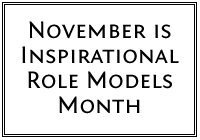A poor public speaking introduction can create a downward spiral. A good introduction, like a movie trailer, can entice the audience and build the speaker's momentum.
Video Marketing-The New Interview Presentation
 How do you make your job interview stand out in a crowded interview? In a previous post I blogged about a woman who was getting ready to pitch her boss for a promotion. To make her and her presentation memorable we decided to create a short video.
Why? Because I see a change in the market. Youtube.com is the number two search engine after google. Video creates that personal touch and ups the trust factor in presentation marketing. Well, now it seems that interviewers are catching on. Is the resume becoming passe? Probably not. But a video presentation can sell you better than any piece of paper. An expert can write a professional resume but nobody can speak for you. Speakmarketing is one of the most powerful ways to promote a business and create visibility inside the workplace. So it makes sense that video presentation would be the next wave in job interviews. Now more than ever before, everybody must have good presentation skills. Speaking is the new competitive weapon.
How do you make your job interview stand out in a crowded interview? In a previous post I blogged about a woman who was getting ready to pitch her boss for a promotion. To make her and her presentation memorable we decided to create a short video.
Why? Because I see a change in the market. Youtube.com is the number two search engine after google. Video creates that personal touch and ups the trust factor in presentation marketing. Well, now it seems that interviewers are catching on. Is the resume becoming passe? Probably not. But a video presentation can sell you better than any piece of paper. An expert can write a professional resume but nobody can speak for you. Speakmarketing is one of the most powerful ways to promote a business and create visibility inside the workplace. So it makes sense that video presentation would be the next wave in job interviews. Now more than ever before, everybody must have good presentation skills. Speaking is the new competitive weapon.
Read this WSJ article about the impact of digital media.
http://online.wsj.com/article/SB10001424052970203750404577173031991814896.html?mod=googlenews_wsj
Why Aren’t More Famous Actors Better Public Speakers?
Speaking to a Grieving Audience
 The other evening I was preparing for my next Confidence Class for eighth grade girls in my community when an email came across my desk. A mother warned me that the principal of the school died yesterday afternoon suddenly and unexpectedly of a heart attack. She alerted me that the girls were shocked and broken up by the news and she wasn’t sure how responsive they would be in the class. I thanked her for letting me know and planned my strategy.
I recalled a professional speaker who spoke before an audience that was not responding. No matter what he did he couldn’t get a reaction. They just sat there with blank faces. Finally, he played his last card and said with exasperation, “What’s going on? Did somebody die?
The other evening I was preparing for my next Confidence Class for eighth grade girls in my community when an email came across my desk. A mother warned me that the principal of the school died yesterday afternoon suddenly and unexpectedly of a heart attack. She alerted me that the girls were shocked and broken up by the news and she wasn’t sure how responsive they would be in the class. I thanked her for letting me know and planned my strategy.
I recalled a professional speaker who spoke before an audience that was not responding. No matter what he did he couldn’t get a reaction. They just sat there with blank faces. Finally, he played his last card and said with exasperation, “What’s going on? Did somebody die?
The Five Letter Word that Kills Telemarketing Presentations Every Time
 This morning the phone rang. It was a recorded message. It's rare that I listen to one of these recordings. My knee jerk response is to hangup. But there was a reason I kept listening. The offer was something I wanted. And the sales presentation was surprisingly excellent. The recording had a strong, clear, energetic voiceover and the brief message got to the point quickly. The ending had a strong call to action and a sense of urgency. You could press 1 and speak to a representative or you could press 2 to disconnect and give your competitor the opportunity for a one person per industry opportunity. Wow! I wanted to know more.
I called and spoke to an outgoing and knowledgeable telemarketer. He answered my questions. He showed me the site online with an example of a customer's site. The price wasn't out of reach. All I had to do was give my credit card over the phone and I would be assigned a representative who would get me started. The offer sounded exciting and something that would help me grow my business. He asked for my credit card and I said no.
This morning the phone rang. It was a recorded message. It's rare that I listen to one of these recordings. My knee jerk response is to hangup. But there was a reason I kept listening. The offer was something I wanted. And the sales presentation was surprisingly excellent. The recording had a strong, clear, energetic voiceover and the brief message got to the point quickly. The ending had a strong call to action and a sense of urgency. You could press 1 and speak to a representative or you could press 2 to disconnect and give your competitor the opportunity for a one person per industry opportunity. Wow! I wanted to know more.
I called and spoke to an outgoing and knowledgeable telemarketer. He answered my questions. He showed me the site online with an example of a customer's site. The price wasn't out of reach. All I had to do was give my credit card over the phone and I would be assigned a representative who would get me started. The offer sounded exciting and something that would help me grow my business. He asked for my credit card and I said no.
And there was one major reason I didn't do it. One little five letter word stopped me cold. That word is TRUST. I didn't know the person on the other end and couldn't be sure if this was a legitimate company or a telephone scam. If there had been a television or radio infomercial with an 800 number there would've been a little more legitimacy. But an unsolicited call will always raise doubts no matter how well the caller speaks or how polished the presentation.
In today's market, trust is at an all time low. Audiences have a prove-it-to-me attitude. Not only are they slow to part with their money; the lack of trust is a symptom of fear. Speaking continues to be the new competitive weapon. But use it wisely. Build a relationship with your audience. Develop a know-like-trust process through social media, articles, blogging, youtube, and third party endorsements. So that when you call or even speak before a live audience there will be a spark of recognition and the beginning of trust.
Stop Setting Speaking Goals That Fail
You want to be a great public speaker and communicator. So you set your goals. And it doesn't happen. Why? You may be sabotaging your speaking success without even knowing it! The top public speakers and presenters know the secret to communication success is setting the right goals. Whether you're speaking to the media, presenting to the board, or leaving a voicemail, good presentation skills start with a goal.
In this video you'll learn the two types of goals and how to choose the goal that will let you succeed.
[youtube]http://youtu.be/CY_z889b-SI[/youtube]
Public Speaking: Entice Your Audience to Come to You
 A coaching client called me because she was about to have a performance discussion with her boss. She wanted to be promoted and knew she had to be a clear, confident, and convincing communicator. But there was one presentation obstacle that she wasn't sure she could overcome. Her boss liked to watch financial news on TV when people were in the office. She wondered how she could command his attention, gain his respect, and make herself heard.
In keeping with my philosophy, (if you can't beat 'em, join 'em), we decided to make a three minute video. That's right! Showing a video would get his attention. My client would speak into the video camera as if she were speaking directly to her boss. She would talk about her credentials and her accomplishments and then add a couple of quick video testimonials from her biggest supporters in the company. Thinking creatively would get his attention, position herself as an innovative, outside -the box -thinker, and certainly make her more memorable than any of her colleagues.
A coaching client called me because she was about to have a performance discussion with her boss. She wanted to be promoted and knew she had to be a clear, confident, and convincing communicator. But there was one presentation obstacle that she wasn't sure she could overcome. Her boss liked to watch financial news on TV when people were in the office. She wondered how she could command his attention, gain his respect, and make herself heard.
In keeping with my philosophy, (if you can't beat 'em, join 'em), we decided to make a three minute video. That's right! Showing a video would get his attention. My client would speak into the video camera as if she were speaking directly to her boss. She would talk about her credentials and her accomplishments and then add a couple of quick video testimonials from her biggest supporters in the company. Thinking creatively would get his attention, position herself as an innovative, outside -the box -thinker, and certainly make her more memorable than any of her colleagues.
Last month, I wrote about Public Speaking: When Science Meets Art, which is a great example of using creativity when presenting. In 2012 the stakes will be higher. Greater creativity and innovation will be needed for communicators and public speakers to get noticed, stand out, and be heard. And video marketing will play an important role.
Political Presentations: The Double Standard Continues
 In June, I blogged about Michele Bachmann and the double standard for women politicians. It seems that the media continues to display sexism toward women candidates. Whether it's Hillary Clinton, Sarah Palin, or Michele Bachmann there seems to be an element of sexism even as we approach 2012.
First we had to hear the commentary each time Hillary had a new hairstyle. While this may be appropriate for a First Lady, when a woman is running for political office she ought to be taken more seriously. How often do we critique a male candidate's hair? (Donald Trump doesn't count).
In June, I blogged about Michele Bachmann and the double standard for women politicians. It seems that the media continues to display sexism toward women candidates. Whether it's Hillary Clinton, Sarah Palin, or Michele Bachmann there seems to be an element of sexism even as we approach 2012.
First we had to hear the commentary each time Hillary had a new hairstyle. While this may be appropriate for a First Lady, when a woman is running for political office she ought to be taken more seriously. How often do we critique a male candidate's hair? (Donald Trump doesn't count).
During the Republican debates, Michele Bachmann was accused of not knowing her facts - even when she did. In one debate, she bested Newt Gingrich regarding his involvement in Fannie Mae, yet the media did not make much of her win.
The most recent sexist remark was by John McLaughlin of the McLaughlin Group when he said we have a "Gal Candidate". A GAL? A friend asked me if I would find it offensive if his 87 year old father referred to a woman as a gal. I replied, "No. He's a product of his times. But a journalist and moderator knows better. He's on national TV and is subject to professional standards. He didn't refer to 'guy candidates'".
Language is a mirror into how one thinks. It's difficult to be taken seriously as a woman candidate when you're called a "gal". It's amazing that this kind of double standard is going on in the U.S., when other countries have elected a woman president or prime minister.
As a public speaker and debater, Michele Bachmann has handled herself well by sticking to the facts and not showing a lot of emotion. Will gender always be a factor? Is it possible to evaluate the candidates on their merits, without considering gender? Or will it always color our perceptions?
Public Speaking: When Science Meets Art
There are no boring topics-only boring speakers. I say this in all my speeches and seminars. The audience may look at me with skepticism but they eventually realize the truth. I tell them the story about Elliot who was in one of my Knockout Presentations workshops. I asked him to talk about a passionate topic. He chose his job of inventory control. After failing to convince him to choose another topic, I listened to Elliot speak about his job. Well, I was totally surprised. Elliot really was passionate about inventory control! The reason many presentations are boring is because the speakers lack passion. The give me the excuse that their topic is technical. Well, I'm here to say that public speaking is both a science and an art and when the two intersect it's magical. Here is a video to show how an otherwise dry presentation can be captivating and engaging when you combine it with art and creativity. Do you think this speaker engaged the audience? Do you know the art and science of speaking? What's stopping from giving a knockout presentation?
Confident Public Speaking Starts Too Late
 After 20 years consulting in corporate America I've come to this conclusion. We wait too long to build confident leaders. Important leadership skills such as public speaking and confident communication must begin much earlier. That's why I started a Confidence Class for middle school girls in my community.
In 2006 a mother called me. I don't know how she got my name. She explained that her daughter got nervous standing up and speaking in her 7th grade class. She wanted me to teach her to be confident. Although I coach business leaders to project executive presence, she was so persistent that I caved in. I told her if she could get 10 girls together I would teach a class on the weekend. To my surprise, she rounded up 10 lovely middle school girls from the same class and we had our first meeting in her house.
After 20 years consulting in corporate America I've come to this conclusion. We wait too long to build confident leaders. Important leadership skills such as public speaking and confident communication must begin much earlier. That's why I started a Confidence Class for middle school girls in my community.
In 2006 a mother called me. I don't know how she got my name. She explained that her daughter got nervous standing up and speaking in her 7th grade class. She wanted me to teach her to be confident. Although I coach business leaders to project executive presence, she was so persistent that I caved in. I told her if she could get 10 girls together I would teach a class on the weekend. To my surprise, she rounded up 10 lovely middle school girls from the same class and we had our first meeting in her house.
I discovered that I really enjoyed working with them and it brought back memories of my speech pathology days in the New York City schools. After learning skills of confident public speaking, her daughter gave a reading in her church before 100 people. Another girl, gave the acceptance speech for her grandfather at his legal society dinner of 800 attorneys. She received a standing ovation. It seemed the success of the classroom had spilled over into their every day lives.
And now here I am again, doing my third confident public speaking class for middle school girls. Three daughters in one family have now attended my class to become confident public speakers. The second sister went on to debate on a National level. Her mother told me that the Confidence class in public speaking served as the foundation for her to go on to join the debate team.
In each one hour session, the girls learn the same skills I teach adults in companies, learn to give each other balanced feedback, and watch themselves on videotape. What would happen if young students learned these skills when they were young? There would be fewer bad presentations. They would be better leaders. And maybe more women could chip away at the glass ceiling.
Change your Language to Lead... or Crash and Burn
 According to Malcolm Gladwell's book, Outliers, language can impact bottom line results. He suggests that in the airline industry, where Korea is the most hierarchical culture, lower ranking flight crews were afraid to voice concern to superiors. As a result, Korean Airlines had the most crashes.
How did they resolve this problem? They changed the language of the cockpit to English. By changing the tone in the cockpit, staff had a different context, culture and a way of being heard.
According to Malcolm Gladwell's book, Outliers, language can impact bottom line results. He suggests that in the airline industry, where Korea is the most hierarchical culture, lower ranking flight crews were afraid to voice concern to superiors. As a result, Korean Airlines had the most crashes.
How did they resolve this problem? They changed the language of the cockpit to English. By changing the tone in the cockpit, staff had a different context, culture and a way of being heard.
Although there's some controversy over whether their improved flight record was a result of a change in language or a change in personnel policies, the bottom line is that the language one uses directly impacts one's ability to influence a situation. Men and women sometimes use language differently, which can cause miscommunication and an erosion of influence. Speakers or leaders who use clear, specific, definitive language increase their credibility. Language is powerful.
How do you speak to your audience? To your superiors? To your peers and direct reports? To your customers? To your shareholders? Leaders who lack executive presence, may not be using language effectively.
Ambiguous questions and weak language can undermine leadership, and result in lost opportunities and sales.
The DiResta Communications approach to presentation is the Science of Speaking-what confidence looks like, sounds like and how to speak the language of confidence. Our coaching programs improve leadership communication and organizational effectiveness.
Speak To Be Heard
Do people talk over you so that your voice isn't heard? Do you shut down because nobody listens when you speak? As a public speaker, do you have to shout to get the group to quiet down and listen to you? When you're speaking one-to-one, do you experience constant interrupting? In this video, you'll learn three reasons why you're not being heard and what you can do to be a more effective speaker and communicator.
What Every Motivational Speaker Knows That You Don't
 What if there was a way for you to rev up your audience every time? What if you could anchor them emotionally to your message during every presentation? Well, you can. The top public speakers know the secret to successful speaking and creating a wow factor for the audience. Motivational speakers use music.
Listen to your favorite song on the radio and you'll experience a flood of memories. That song is ingrained in your brain. Music is a powerful anchor to your emotions. You hear the song and you're instantly transported to that time and place where you first heard it.
What if there was a way for you to rev up your audience every time? What if you could anchor them emotionally to your message during every presentation? Well, you can. The top public speakers know the secret to successful speaking and creating a wow factor for the audience. Motivational speakers use music.
Listen to your favorite song on the radio and you'll experience a flood of memories. That song is ingrained in your brain. Music is a powerful anchor to your emotions. You hear the song and you're instantly transported to that time and place where you first heard it.
Did you ever wonder why every national convention plays music before the presentations, during the breaks, and after the presentations? Music creates an emotional link.
Dr. Concetta Tomaino, director of the institute for Music and Neurologic Function states, "Once the emotional link to music is established, our neurological reactions are profound. Our brain creates hard-wired responses to certain situations that are repeated when listening to the music. Music can actually change our mood. In fact, it can increase performance.
Certain songs can trigger the release of dopamine and seratonin in the brain which are "feel good" hormones. Music that is uplifiting should have the same rhythm as our heartbeats (60-80 beats per minute). Mozart and many classical pieces have this rhythm. Rhythm above 80 beats per minute can rev up the crowd or cause anxiety. That's why many conventions play rock music. It has a fast beat to energize the audience.
Music will enhance your presentations and seminars. Use slower music for writing or group exercises. Pump up the volume and the beat to energize and motivate the audience. When you play music during a paid speaking engagement, be aware that you'll need to pay a licensing fee. Or, you can buy royalty free music.
Today's audiences expect an entertaining experience. Experiment with music and watch the magic happen.
The Fine Art of Public Speaking
 Is speaking an art or a science? I say it's both. Although my approach is the science of speaking, public speaking is also an art. First you need to know the rules or mechanics. Once you know the fundamentals that's when you can improvise and get creative. In truth, we need to use both sides of the brain to be effective speakers. Even universities are realizing the importance of right brain thinking in business. A new trend is emerging in higher education. Business majors, musicians, accountants and actors are sitting together in class to bridge the gap between art and business. Philadelphia University has a program called Building a Business Bridge for your Art. Julliard School and Fordham University offers a class, How to be a virtuosic genius-and get paid for it. It seems the starving artist may be going the way of the wooly mammoth.
So what is the lesson for public speakers? As a speaking strategist I find that some of my coaching clients forgo the "art" of speaking. They load their PowerPoint presentations with heavy text, data, full sentences, and jargon. Data and evidence are important. And so are stories, metaphors, humor, interaction, games, and enthusiasm. Even timing can be an art. Pausing can change the meaning of your message. A long, dramatic pause can evoke emotion where a quick pause will not. It was Artur Schnabel who said, "The notes I handle no better than many pianists. But the pauses between the notes - ah, that is where the art resides."
Is speaking an art or a science? I say it's both. Although my approach is the science of speaking, public speaking is also an art. First you need to know the rules or mechanics. Once you know the fundamentals that's when you can improvise and get creative. In truth, we need to use both sides of the brain to be effective speakers. Even universities are realizing the importance of right brain thinking in business. A new trend is emerging in higher education. Business majors, musicians, accountants and actors are sitting together in class to bridge the gap between art and business. Philadelphia University has a program called Building a Business Bridge for your Art. Julliard School and Fordham University offers a class, How to be a virtuosic genius-and get paid for it. It seems the starving artist may be going the way of the wooly mammoth.
So what is the lesson for public speakers? As a speaking strategist I find that some of my coaching clients forgo the "art" of speaking. They load their PowerPoint presentations with heavy text, data, full sentences, and jargon. Data and evidence are important. And so are stories, metaphors, humor, interaction, games, and enthusiasm. Even timing can be an art. Pausing can change the meaning of your message. A long, dramatic pause can evoke emotion where a quick pause will not. It was Artur Schnabel who said, "The notes I handle no better than many pianists. But the pauses between the notes - ah, that is where the art resides."
Public speakers who have good content that is relevant to the audience and can entertain the audience have truly mastered the fine art of public speaking.
How do you practice the art of public speaking? If the pauses between the notes is where the art of music resides, where does the art of public speaking reside?
Public Speaking Ranks As The Top Entrepreneurial Skill
 Quora.com printed the best advice for entrepreneurs, from entrepreneurs. This quote was one of the top three submissions that received the most votes from readers.
Tim Westergren, founder of Pandora, a popular music-streaming service:
Quora.com printed the best advice for entrepreneurs, from entrepreneurs. This quote was one of the top three submissions that received the most votes from readers.
Tim Westergren, founder of Pandora, a popular music-streaming service:
Learn public speaking. Of all the skills that an entrepreneur can have, I think the ability to convey an idea or opportunity, with confidence, eloquence and passion is the most universally useful skill. Whether you're pitching a group of
I couldn't agree more and I've been saying this for years. In 2007, I was quoted in a New York Times article, "Um, Uh, Like Call in the Speech Coach".
'Small business is leaving money on the table because it is overlooking one of the most powerful marketing skills: speech,' said Diane DiResta, a speech and communications coach in New York. 'Speech is the way a small business builds its brand, establishes expertise, gets free publicity and gets in front of its market.'”
And that's why I give webinars and speeches to entrepreneurs on Speak Powerfully, Sell More, How to Use Speaking To Grow Your Business. Speaking is the most cost effective and underutilized marketing strategy. I spoke in Tanzania as a result of giving two free presentations. (The client doesn't always buy the first time). A free speech at a National Conference led to business in Egypt. Speaking pays. Good presentation skills impact every aspect of business from getting the interview, making the sale, attracting funding, or running for office. It's the very essence of executive presence.
As leaders and executives, entrepreneurs cannot afford to avoid public speaking. Public speaking is the new game changer.
Audience Resistance: If You Can't Beat Them, Join Them
 You don't need the audience from hell to encounter resistance. Resistance can occur in one-to-one conversations or in small groups. Sometimes, resistance is subtle as in the passive aggressive participant. It occurs in sales calls all the time. Most presenters think of resistance as negative. Yet, research demonstrates that in sales calls, skepticism is actually a good sign and often leads to a sale. Resistance shows that the audience is engaged. Your job is to embrace the resistance and as in martial arts, use their energy to reverse the situation.
In sales presentations you can reverse negative questions. Objection: "You've never worked in our industry." Answer: "That's exactly why you need me. I'm objective."
You don't need the audience from hell to encounter resistance. Resistance can occur in one-to-one conversations or in small groups. Sometimes, resistance is subtle as in the passive aggressive participant. It occurs in sales calls all the time. Most presenters think of resistance as negative. Yet, research demonstrates that in sales calls, skepticism is actually a good sign and often leads to a sale. Resistance shows that the audience is engaged. Your job is to embrace the resistance and as in martial arts, use their energy to reverse the situation.
In sales presentations you can reverse negative questions. Objection: "You've never worked in our industry." Answer: "That's exactly why you need me. I'm objective."
Whether you’re managing a team, running a meeting, or giving a formal presentation, it’s not enough to be a good speaker. Effective public speakers must be able to manage the process. Group dynamics are ever changing and dealing with groups can be sticky. A good leader or facilitator is able to change perspective and use a number of strategies.
I developed the 3D Strategy which works in most situations-Depersonalize, Detach, Defuse.
Step one: depersonalize. People come with their own emotional baggage. One woman walked out of a motivational speech because the speaker was wearing an Elvis costume. The audience member didn't like Elvis. It had nothing to do with entertainer’s talent or competence. So don’t take it personally.
Step two: detach. That means that you don’t engage the ego. Once you go head-to-head with that heckler you set up a competitive dynamic. Don’t let your emotions get out of control. Ask questions; don't defend. Use the power of peer pressure.
Step three: defuse. Dissipate the negative energy. One of the best defusers is humor. If you get tense, the negative energy will increase. Take a light, playful approach. You can’t laugh and be angry at the same time.
I've learned that when I embrace resistance, the audience is more engaged. Recently, I gave a speech at the NYXPO at the Javits convention center in New York. Knowing that people would be checking their cell phones, I created a hash tag #dianediresta, and told them to tweet any tips they'd like to share with their networks. What once was a negative is a great BIG positive. Now my message is going out to thousands of people.
Just like a grain of sand is an irritant to an oyster, over time that irritant becomes a pearl.
The anonymous author of this quote said it best:
"With every shift, with every change resistance is the natural order. The tree resists the wind, the egg resists the chicks hatching and the cocoon resists the butterfly’s first flight. Without resistance there could be no stability and there could be no strength. Ultimately resistance is the promise of success, never of failure, always of success; yours, mine and every person’s everywhere".
Presenting at Tradeshows: Lessons Learned at the NY XPO
Yesterday I presented at the NYXPO, one of the largest small business tradeshows in New York. It was my third time speaking and my second time having a tradeshow booth. My presentation, Speak Powerfully, Sell More gave small business owners tips on how to leverage speaking as a marketing strategy. I shared with the them that networking and speaking showcases were my two strongest marketing approaches.
At the booth, many lessons were learned from last year. My goal was to sell my book, Knockout Presentations, and to obtain leads for my Sendout Cards business. Here's what we now know works when presenting at tradeshows:
1. Be fully staffed. We had five people available although not at the same time. This allowed us to handle traffic and provide breaks for staffers.
2. Provide training. Exhibitors need to know how to dress and must be well versed about the product or subject.
3. Recognize that a tradeshow exhibit is a presentation. Do not chew gum or eat in the booth. Stand and greet people with a smile. Listen more than you speak and ask questions.
4. Learn traffic patterns. We realized that the morning is slow. Traffic picked up right after I spoke and after lunch was the busiest time.
5. Do not pack up early. We signed up a couple of new people 10 minutes before closing time.
6. Provide a demo. The three minute video was the best sales tool. Most people are visual and professional videos keep the message focused and consistent.
7. Bring a wifi card or a phone that uses tether technology. The Javits Center is New York City is highly unionized and you must pay for everything including electricity.
8. Display samples. People were attracted to the cards and could feel the quality and see the variety. Selling my book rather than using an order form allowed buyers to browse through the chapters. The touch and feel of a product is important.
9. Bring clipboards, envelopes for business cards, plenty of pens and anything else to help you organize your leads and materials.
10. Sell beyond the booth. Invite people to visit you after your seminar. Promote the booth to your list before the event. Hand out flyers to other exhibitors. Follow up with leads in 24 hours.
11. Keep the booth simple, uncluttered and attractive. The floor length banner was easy to assemble and drew people into the booth. Put baggage under the table, behind the curtain.
12. Have a time limited offer. When people signed up at the booth they received a free gift. We learned from last year that most visitors are looking for freebies. Last year we offered a gift if they watched the demo. When we followed up they were no where to be found. This was our most important lesson. You must qualify your leads.
13. Wear comfortable shoes. There aren't a lot of chairs on the convention floor and you'll be busy working the crowd.
(I'm conducting business with my feet up today!)
The Media Speaking Tip That Joe Walsh Missed
 How many times do I have to say it? No caffeine before a presentation!
Illinois Congressman, Joe Walsh, proved my point when he had a meltdown during a recent meeting with his constituents. He yelled at the crowd and told one woman he didn't care if her government job was cut. He later acknowledged that he was a "bit too passionate" with his constituents.
How many times do I have to say it? No caffeine before a presentation!
Illinois Congressman, Joe Walsh, proved my point when he had a meltdown during a recent meeting with his constituents. He yelled at the crowd and told one woman he didn't care if her government job was cut. He later acknowledged that he was a "bit too passionate" with his constituents.
I say on page 78 of my book Knockout Presentations that coffee will make you more jittery. Don't drink coffee before a presentation. Politicians spend so much money on media training and yet in this case, Joe would have been better served by a nutritionist.
It's surprising how few speakers know how foods and chemicals can affect their performance. We've all seen the impact of drinking alcohol before a presentation. Stay away from sugary, heavy foods and if you must have coffee, switch to decaf. In Joe's case, make that herbal tea. Maybe I should send a free copy of Knockout Presentations to the 2012 candidates.
The Speaking Secret of Inspirational Leaders
 Have you ever wondered why some leaders are more inspirational than others? Here's the secret. They speak from the inside out. Where most leaders speak about the WHAT and the HOW, leaders who inspire audiences with their message do one thing differently. They speak about the WHY.
Have you ever wondered why some leaders are more inspirational than others? Here's the secret. They speak from the inside out. Where most leaders speak about the WHAT and the HOW, leaders who inspire audiences with their message do one thing differently. They speak about the WHY.
 An example of this is Steve Jobs of Apple. His mantra was "Everything we do, we believe in challenging the status quo." It's his WHY for his company. That's why he inspired a strong cult-like following. His customers are more than buyers. They are believers who want to "think different".
An example of this is Steve Jobs of Apple. His mantra was "Everything we do, we believe in challenging the status quo." It's his WHY for his company. That's why he inspired a strong cult-like following. His customers are more than buyers. They are believers who want to "think different".
 Martin Luther King wasn't the only leader who believed in civil rights yet he was the one who inspired a national march on Washington. He spoke from his WHY. He didn't talk about facts. He said, "I believe. I have a dream." It became a movement that went beyond the African-American community. It was a universal cause that people could believe in.
Martin Luther King wasn't the only leader who believed in civil rights yet he was the one who inspired a national march on Washington. He spoke from his WHY. He didn't talk about facts. He said, "I believe. I have a dream." It became a movement that went beyond the African-American community. It was a universal cause that people could believe in.
 Rick Warren, author of The Purpose Driven Life, surprised the media with the overwhelming success of his book. His belief that "God Has a Plan for You," tapped into a deep, emotional need regardless of religious orientation. It's a message that is bigger than the individual and people connected emotionally.
Rick Warren, author of The Purpose Driven Life, surprised the media with the overwhelming success of his book. His belief that "God Has a Plan for You," tapped into a deep, emotional need regardless of religious orientation. It's a message that is bigger than the individual and people connected emotionally.
We now know the neurological reason these speakers are able to inspire. When a speaker talks about the WHAT and the HOW, the message appeals to the neocortex of the brain. This is the center of rational thought. People are not generally moved to action by facts and figures.
When you talk from your WHY, you speak directly to the limbic brain. The limbic brain appeals to trust, loyalty, and emotion. People don't buy what you do, they buy why you do it.
So, what is your WHY? Why do you do what you do? What do you believe? Think about those leaders who inspire others, whether it's one-on-one or to a large audience. Who are your inspirational role models?
WHY?
Click to read BusinessWeek's article: 10 Attributes of Leaders Who Inspire
Speaking in Public: Something to Chew On
 Christine Quinn, New York City councilwoman, was caught on TV chewing gum while she was standing behind the mayor. When it was her turn to present, she folded the gum in her cheek. Yuck! Not a pretty sight and not very professional. And this from someone who wants to be the next mayor of New York City. It certainly diluted her image. Gum chewing will quickly destroy the executive presence of any leader.
Christine Quinn, New York City councilwoman, was caught on TV chewing gum while she was standing behind the mayor. When it was her turn to present, she folded the gum in her cheek. Yuck! Not a pretty sight and not very professional. And this from someone who wants to be the next mayor of New York City. It certainly diluted her image. Gum chewing will quickly destroy the executive presence of any leader.
Before Kate Middleton married Prince William, her family was invited to a major event where the Queen was present. When the camera moved in for a close up, Kate's mother was seen chewing gum. It didn't matter that it was for reducing cigarette craving . It was perceived as insulting and low class.
When giving a presentation, never chew gum. It may seem like a little thing but it's not. And little things make a great impact. A good rule of thumb is to carry hard candy instead of gum. In most social situations, gum chewing is not polite, it's disrespectful, and certainly a distraction to the listeners. It competes with your message. The audience will remember the behavior over the words. When viewers saw the Christine Quinn video, they laughed. This is not the image you want as a public speaker unless you're a humorist. If you get caught masticating, it helps to have a good recovery strategy like Christine Quinn's publicist.
The response was “Yesterday, Chris Quinn announced the creation of 682 affordable apartments and 2,900 construction jobs — now that’s something to chew on.




